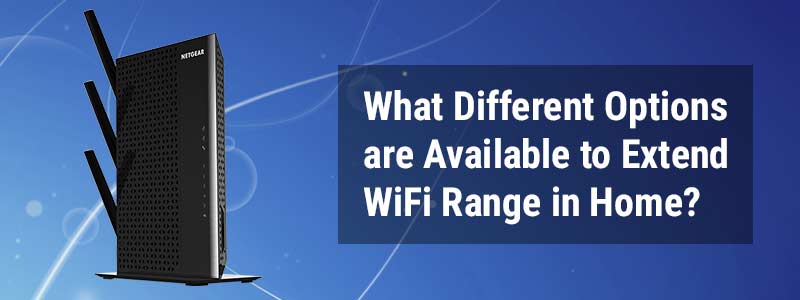What Different Options Are Available to Extend WiFi Range in Home?
With the ever-evolving smart gadgets like smart TVs, smart LEDs, garage door openers, and tablets, the need for high-speed consistent WiFi coverage all over the home has become a necessity. Most people generally use WiFi routers provided by their Internet Service Providers (ISPs). However, some households upgrade to avant-garde, more powerful routers that come with all the latest bells and whistles. Although these new routers enhance WiFi speed, yet they may not be able to provide you whole-home WiFi coverage. So, here a question arises, i.e. how to extend WiFi range in my home?
Worry not! We have got the answer to this question! Here, we will review a few simple ways to help you get complete WiFi coverage throughout average-sized, large, and very large homes. Let’s get started.
How to Extend WiFi Range in Home?
1. Install a WiFi Range Extender
One way to extend WiFi range in your home is to install a wireless extender. A WiFi range extender connects to your existing router for increasing its WiFi coverage and creates a separate WiFi network having its own SSID and security details.
Netgear is known as the most reputed brand when it comes to WiFi extenders. Netgear extenders can be easily installed via mywifiext net setup web page. Setting up a Netgear extender can help you a lot if your home WiFi signals are being blocked by solid concrete walls, metal doors, aluminum studs, Bluetooth speakers, cordless phones, baby monitors, and other interference-creating objects. Regarding the placement, keep in mind to place your Netgear range extender and the existing router in the same room.
2. Opt for an Additional WiFi Router
As an alternative, some users opt for an additional WiFi router to extend WiFi range in their home. Nonetheless, this method requires network cabling at all the suitable access points within your house, making initial setup and maintenance complicated and pricey. Moreover, installing an additional router doesn’t bypass the login issues, nor the bandwidth problems.
3. Install a WiFi Mesh System
Realizing the challenge of providing flawless wireless coverage to the typical home, Netgear came with a solution namely Nighthawk mesh extender system. It offers a smooth, increased WiFi range with no login issues, bandwidth problems, or the setup complications characterized by installing conventional extenders and additional routers.
The Nighthawk mesh system is different in various key areas. Firstly, it comes with a backhaul radio with a dedicated connection to your existing router that is not shared by your connected devices. Not only can the mesh extender and router communicate directly with each other, but also the 2.4 GHz and 5 GHz bands are available for devices to broadcast data at the highest speeds possible. This feature is a total game changer in the WiFi range extension.
The next difference is that the Nighthawk mesh extender shares the same SSID and security details of the current router. Thus, you can walk around your home and your device will flawlessly connect to the strongest wireless signal, be it delivered by the Nighthawk mesh system or the router. Given that there is only one network name with one password, so you won’t experience any dropouts. In order to extend WiFi range using the Nighthawk mesh extender, you need to set it up properly via the Netgear Genie setup wizard. If you don’t know how to install a Nighthawk mesh extender system, take instant help from our well-versed technicians now.
4. Use Powerline Adapters
Though the powerline adapters are gradually being phased out and replaced by mesh WiFi, yet there is still a place for them. Conventional powerline adapters are the cheapest solution to extend WiFi range if you are looking to get WiFi signals in one specific room or even a separate building like a garage.
All you need to do is just plug one adapter into a wall socket and connect it to the router using an Ethernet cable. Afterward, plug the second adapter into an electrical outlet in another room like a garage, loft room, or hall. Basically, powerline adapters create a new WiFi hotspot; they don’t boost the existing WiFi connection like a WiFi range extender.

